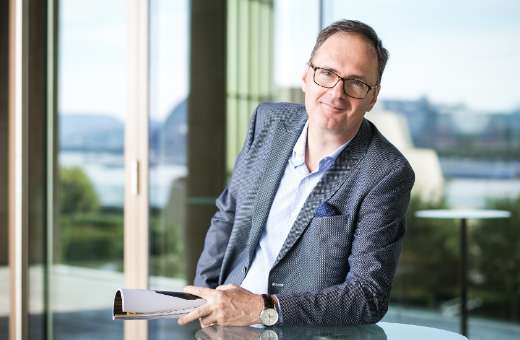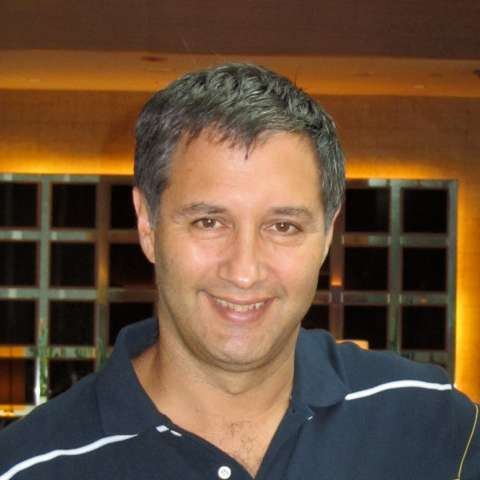Csaba Káel’s CV is multi-faceted: freelance opera director, CEO of Müpa (formerly known as the Palace of Arts Budapest), chair of major performing arts festivals in Hungary, Hungarian Film Commissioner. That’s not a historical CV: Káel holds all these jobs today. In the second part of a two part interview (by Zoom, of course: this was 2020), I spoke to Káel about opera, about video streaming of opera and concerts and his hopes for Hungarian film.

For most of us, the surrealism of Luis Buñuel is a journey into a strange alternative world, from which we can return to our daily existence. For Csaba Káel, growing up in the “Real Socialism” of 1970s Hungary, Buñuel was just telling it like it is. “Buñuel was such a great master, who could make reality into surreality. You have to understand: for us, communism was the same. It looked like reality, but it was truly surreal.”
By 1989, Káel was an established film director and was given the chance to direct his first opera by Imre Kiss, then CEO of Hungarian State Opera, an opportunity for which he’s very grateful, since “it’s very difficult to get to direct opera because it’s a very closed community”. When Müpa opened in 2005, Kiss, then CEO, invited Káel to direct its first opera, in Müpa’s 460 seat Festival Theatre (they started at the beginning of opera with Monteverdi’s L’Orfeo). The plan was to do contemporary and pre-classical operas in the Festival Theatre, leaving the larger scale works to the State Opera.
However, the temptation of the larger audience space and pin-sharp acoustics in Müpa’s Béla Bartók Concert Hall proved overwhelming, and the following year (on 6/6/6, the 6th June 2006), they staged Mozart’s Zauberflöte. “Our experience was fantastic. A lot of people said ‘I knew this piece very well. But I don’t remember these parts of the piece. Because the special acoustics made the opportunity to listen to special parts of the music. In a big opera house, the right proportion of the music and singers can be very difficult to find.” Many commented that they had never previously heard this quality of operatic music.
Obviously enough, the Béla Bartók Hall is a concert hall, not an opera house, so that imposes constraints on a director: you can’t do costume dramas in opulent sets. That made Káel more than happy: he felt that most 1990s opera direction was outmoded and failed to get to the heart of the theatricality of the piece. He was enthused by the possibilities opened up when singers no longer had to strain “to make their voices reach the third balcony. It’s an intimate way of opera interpretation. Opera singers love to sing in Müpa because they can feel their own voice and they can play with their own voice.” That intimacy, in his view, extends all the way from Monteverdi’s dramas written for small spaces in aristocratic palaces right up to the operas of Wagner. “Wagner is an intimate composer. Everybody is saying that Wagner is always big, but no, you can have a completely different Wagner experience compared to opera houses. You can hear all these intimate, amazing, tiny details of the music in our concert hall; this is very human and you can listen as in a real dramatic situation.” (Listeners can judge for themselves from the recently released DVD of the most recent Müpa Ring from 2019.) The inability to use big sets also turns into an opportunity for younger set and lighting designers to take a different approach (“the youngsters hate the old opera sets - it’s very heavy. For them, this is a kind of modernity”).
But what about filming and streaming opera? “In the 80s and 90s, it was very fashionable to make feature movies for big productions of Carmen, Traviata and also for the early music performances.” Káel himself made a film version of Ferenc Erkel's Bánk Bán, a historical drama famous within Hungary but little known abroad. These productions were very useful because they taught the public about the repertoire, but they were very expensive; making an opera feature with big stars was just horrible.” Then, in the 20th century, the Metropolitan Opera’s Peter Gelb came up with the concept of streaming the Met’s operas. “American Opera was not in very good shape. And Peter Gelb figured out: here are wonderful sets, wonderful big stars, costumes and so on. And it was very interesting because it became a bigger success than the Metropolitan Opera itself.” To Káel, who clearly prefers the live theatrical experience, it seemed very strange that Budapest residents, who had access to two perfectly good opera houses, would come to Müpa to watch streaming from the Met. When other houses attempted to emulate the Met, he notes, a new market appeared with mixed results: the quality of some offerings was outstanding but others were poor, not in terms of the video technology but in terms of the choice of shot. He notes that know-how of placing opera on the screen is critically important and that Gelb was a TV producer long before he arrived at the Met.
Káel questions whether Gelb’s approach would work for anyone who lacked the Met’s roster of big stars, and his analysis highlights the difference between opera productions whose purpose is to be filmed and those where the primary target is the live audience. The latter, he thinks, are problematic: gestures are too grand, intimacy is lost, and close-ups are particularly difficult: the facial expression of an opera singer singing at full throttle to a big house is horrible. “It is useful to show certain performances for people who are at home and can’t go everywhere, but this is not the future. We have to figure out somehow, how can we make opera performances specially for video streaming: this is not the same as in a theatre.”
In our times, where Covid restrictions force us into streaming as the performance medium, the solution is to direct the opera performance specifically for the cameras. As an example, he gives his recent direction of Il barbiere di Siviglia, which he did in the style of a silent movie, with two old cameras sited on either side of the stage, livecasting black and white footage into a screen in the middle, the actors asked to do typical silent movie gestures. He imagines that younger film directors, who have grown up with film from childhood, will dream up new visual approaches for opera, and he’s curious as to how these will turn out. “These young directors would also like to rethink the stage directions, because for them, the old days directions are a little bit old school. And opera, in our days, is looking for its real shape.” Káel is convinced that there are exciting possibilities for younger directors to experiment with new creative formats which connect music and film.
He has been around long enough to remember the Soviet era. “There was a cultural policy of the ministries and the institutions had to meet it. It was a party congress, and there was a goal to make productions. But it was not as serious as in the GDR or Prague or Moscow. So there was more freedom here, even at the time.” Although every cloud has a silver lining: he chuckles as he points out that the 1950s were a golden period for Hungarian State Opera because none of the top Hungarian singers were permitted to leave for the West and were forced to stay at home. The situation now is different: Káel thinks it's crucial to be able both to attract international superstars to Hungary and to make Hungary's own talent visible in Europe and in the wider world – an endeavour in which Müpa should play a key role. It's important, he says, that the institution he runs should have the support of European arts networks and the Hungarian government, but without any direct cultural-political expectation or micromanagement.
His hopes hark back to an earlier historical era. “We have to build up our Central European market again.” At 10 million people, the Hungarian-speaking market is too small. But he harks back with enthusiasm to the Austro-Hungarian empire. “Of course, there was always fighting between the nationalities, but the whole system worked very well economically and this region was very strong. Culturally also: a lot of theatres were built in the Austro-Hungarian empire, we had a theatre every fifty kilometres.”
The most recent and most internationally visible addition to Káel’s job portfolio – his appointment in 2019 as Hungarian Film Commissioner – will enable him to take an active role in creating that kind of Central European presence. Hungary is already a major film production centre (the second biggest in Europe, he tells me, after London), which is very important economically but doesn’t interest him artistically: he very much hopes to promote European art film. “Our first and most difficult task is to make a new distribution system for the European continent, because American power is so strong that we can’t make a chance to show our European content.” Budapest has a big Central European film archive, with the rights belonging to the state, which has made it relatively easy for him to take his first step, the creation of a Hungarian film streaming channel called FILMIO. His dream is to make a Central European Netflix, permitting the creation of local content in original language: “it was not so simple, before, because the film market accepted only English language movies. But now, with the streaming channels, you can re-subtitle the movies. Can you imagine: we can make a historical movie in German, Czech, Italian, Hungarian – then it will be more original.”
This interview was sponsored by Wavemaker Hungary


